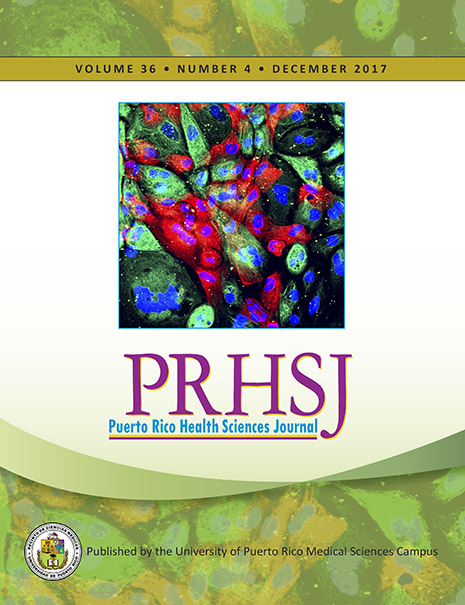Resumen
Objective: To examine the trajectory of fatigue experienced by 26 Puerto Rican (PR) men over the course of External Beam Radiation Therapy (EBRT) and to assess gene expression changes from baseline to midpoint of EBRT using microarray technology. Design/Research Approach- Prospective exploratory and comparative design study. Setting- RT facility located in San Juan, PR. Sample/Participants-26 PR men with non-metastatic prostate cancer. Methods: Participants completed 2 paper forms: demographics and the Spanish version of the 13-item FACT–fatigue at baseline, midpoint, and end of EBRT. Wholeblood samples were collected at baseline and at midpoint of EBRT. Descriptive data was analyzed using t-test, Wilcoxon, and Friedman test for repeated measures. Gene expression data was analyzed using the LIMMA package in R; the functional network analysis was conducted using Ingenuity Pathway analysis. Main Research Variable-Fatigue scores, gene expression. Results: Subjects were of ages 52-81 with fatigue scores that remained unchanged during EBRT (baseline=42.38, SD=9.34; midpoint=42.11, SD=8.93, endpoint=43.04, SD=8.62). Three hundred seventy-three genes (130-up regulated and 243-down regulated) were differentially expressed from baseline to mid-point of EBRT (FDR<0.01). The top distinct canonical pathways of the differentially expressed probesets (p<0.0001) were: “Phospholipase C Signaling,” “Role of NFAT in Regulation of the Immune Response,” and “Gαq Signaling.” Conclusion: While fatigue did not worsen over the course of EBRT for this sample as a group, there was variability in fatigue across the sample. It is possible that the over expression of the SESN3 gene, known to suppress oxidative damage, may have contributed to the attenuation of fatigue in this clinical population.
Authors who publish with this journal agree to the following terms:
a. Authors retain copyright and grant the journal right of first publication with the work simultaneously licensed under a Creative Commons Attribution License that allows others to share the work with an acknowledgement of the work's authorship and initial publication in this journal.
b. Authors are able to enter into separate, additional contractual arrangements for the non-exclusive distribution of the journal's published version of the work (e.g., post it to an institutional repository or publish it in a book), with an acknowledgement of its initial publication in this journal.
c. Authors are permitted and encouraged to post their work online (e.g., in institutional repositories or on their website) prior to and during the submission process, as it can lead to productive exchanges, as well as earlier and greater citation of published work (See The Effect of Open Access).
